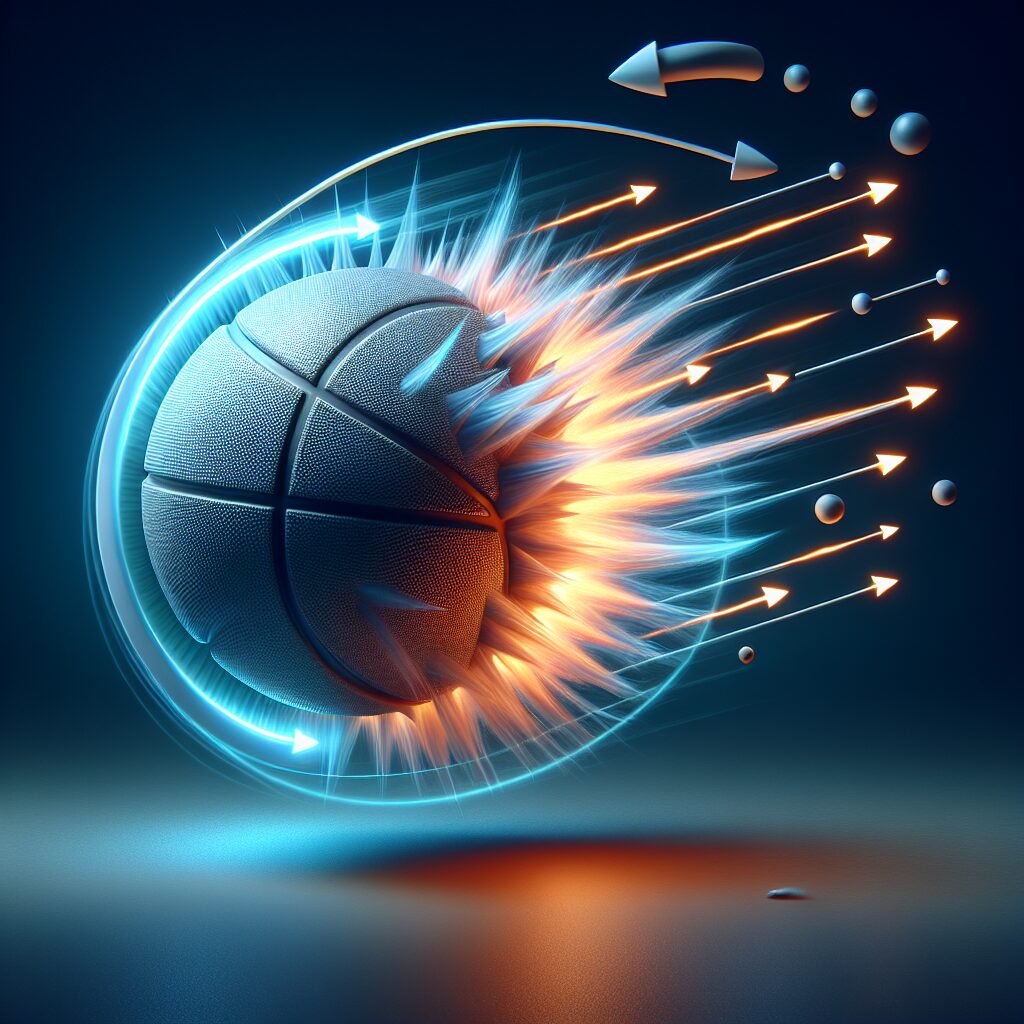Ball joints are an important component of any vehicle and are used to connect the suspension to the steering knuckles. They allow for a controlled movement of the wheels, as well as absorb shocks and vibrations. To ensure long-term performance and durability, ball joints should be regularly lubricated with the right type of grease. The type of grease to use will depend on the specific make, model, and year of your vehicle.The best grease for ball joints is a high-temperature, waterproof lithium-based grease. It should be specifically designed for use on ball joints and other automotive suspension components to provide superior lubrication and protection from wear and corrosion.
Types of Grease for Ball Joints
Ball joints are integral components of many different types of machinery, including cars and heavy equipment. To keep them functioning properly, they must be lubricated. Grease is the most common lubricant used on ball joints, and there are several types available. Lithium-based greases are the most popular choice for ball joints because they are water-resistant and have good wear protection. Other types of grease include calcium-based, synthetic polymers, and heavy-duty greases that offer superior protection in extreme temperatures. The type of grease used should be chosen based on the specific requirements and conditions of the application.
Lithium-based greases are a good choice for ball joints because they offer good wear protection and excellent water resistance. This type of grease also has a high viscosity index, which means it won’t thin out or become too thick when temperatures change. Lithium greases can also withstand high mechanical loads without breaking down or leaking. This makes them an ideal choice for applications where frequent movement is expected.
Calcium-based greases are another option for ball joint lubrication. They provide superior protection against corrosion and have excellent heat resistance properties. Calcium greases have a lower viscosity index than lithium based greases, so they may need to be replaced more frequently in applications with frequent movement or high temperatures.
Synthetic polymers are a more recent development in grease technology, offering improved performance in extreme operating temperatures and high mechanical loads while still providing excellent wear protection and corrosion resistance. Synthetic polymers also provide better thermal stability than traditional mineral oils, making them an excellent choice for applications that require frequent movement or operate at very high temperatures.
Heavy duty greases are designed for use in extreme temperature environments or under difficult operating conditions such as high shock loading or vibration levels. These types of grease will provide superior protection against wear and corrosion while still offering good thermal stability and load carrying capacity.
No matter which type of grease is chosen for ball joint lubrication, it’s important to use the correct amount to ensure optimal performance and longevity of the joint components. It’s also important to regularly check the condition of the grease to make sure it doesn’t become too thick or thinned out over time due to temperature changes or excessive movement.
Advantages of Using Grease on Ball Joints
Using grease on ball joints provides numerous advantages, including better lubrication, improved performance, and increased longevity. Grease is especially important in vehicles that are driven in extreme temperatures or that experience heavy off-roading. The lubrication provided by grease helps the ball joint move more smoothly and prevents it from drying out and becoming too tight or too loose. This helps to reduce wear and tear on the joint, making it last longer. Grease also helps to reduce friction, which can improve the overall performance of the vehicle.
In addition to providing lubrication and reducing friction, grease also helps to protect the ball joint from dirt and debris. This can help to prevent damage from road conditions such as mud, gravel, sand, etc., which can cause premature wear and tear on the ball joint. Grease also helps to prevent rusting and corrosion, which can reduce the life of a ball joint significantly.
Overall, using grease on ball joints is an easy way to ensure optimal performance and longevity of your vehicle’s suspension system. It is an inexpensive way to protect your investment in your car or truck’s suspension system from wear and tear due to driving conditions or extreme temperatures. Grease is a must for any vehicle that experiences heavy off-roading or that will be running in extreme temperatures for extended periods of time. It will help keep your ball joint running smoothly for many years to come.
Advantages of Using Grease on Ball Joints
Using grease on ball joints is a great way to ensure that your vehicle’s suspension system is functioning properly. Grease helps to reduce friction in the system, making it easier for the suspension components to move freely. It also serves as a lubricant, which helps to reduce wear and tear on the ball joints and other suspension components. This can help extend the life of your vehicle’s suspension system and keep it running smoothly for longer. Additionally, using grease on ball joints can help reduce noise from the suspension system, making for a more comfortable ride.
Disadvantages of Using Grease on Ball Joints
One potential downside of using grease on ball joints is that it can attract dirt and debris over time, causing build-up in the system that can interfere with its performance. Additionally, if too much grease is used, it can cause an increase in friction, leading to excessive wear and tear in the suspension system. It is important to follow manufacturer instructions when applying grease to ball joints in order to ensure they are properly lubricated without over-applying.
Choosing the Right Grease for Ball Joints
Ball joints are an essential part of your vehicle’s suspension system. They provide smooth movement and help maintain proper alignment of the wheels. To ensure the best performance, it is important to use the right type of grease in your ball joints. The wrong type of grease can cause excessive wear or even failure of the joint. Here are some tips for choosing the right grease for your ball joints.
The first thing you need to consider when selecting a grease is its viscosity. This refers to how thick or thin it is. Grease with a lower viscosity is better for high-speed applications, while thicker grease is better for low-speed applications. It is important to choose a grease that has a viscosity that matches the application you are using it for.
The next thing you should consider when selecting a grease for your ball joints is its base oil type. Different types of base oils have different properties and can affect the performance of the grease. For example, synthetic oils provide better protection against heat and oxidation than mineral oils.
Finally, you should also consider any additives that might be included in the grease you choose. Additives such as anti-wear agents, corrosion inhibitors, and extreme pressure additives can help improve the performance of your ball joints and extend their life span. Make sure to read the label carefully so you know what kind of additives are included in each type of grease.
By following these tips, you can ensure that you select the right type of grease for your ball joints and get optimal performance from them. Be sure to check with your vehicle manufacturer or an auto shop if you have any questions about which type of grease is best suited for your vehicle’s ball joints.

Viscosity
When selecting grease for ball joints, viscosity is one of the most important factors to consider. This refers to the thickness of the grease, which can affect its ability to penetrate and lubricate the joint. Thicker greases are typically better for ball joints as they are more resistant to high temperatures and pressure. It is also important to select a grease that matches the manufacturer’s specifications, as different types of ball joints may require different viscosities of grease.
Pressure Capacity
The pressure capacity of the grease is also an important factor when selecting a lubricant for ball joints. This refers to how much pressure the grease can handle before it breaks down and fails. Choose a grease that is rated for higher pressure than what your joint will experience in normal operation, as this will ensure optimal performance and reduce wear over time.
Corrosion Resistance
When selecting grease for ball joints, it is also important to consider its corrosion resistance properties. This refers to how well the grease can protect against rust and other forms of corrosion that can occur from exposure to moisture and other environmental elements. Look for greases that are specifically formulated to resist corrosion in order to maximize the life of your joint.
Temperature Range
The temperature range of a lubricant is another factor that should be considered when selecting a grease for ball joints. Look for a product that is designed to perform well at both low and high temperatures, as this will ensure reliable performance regardless of environmental conditions. Additionally, some greases are specifically designed for extreme temperatures and may be necessary in certain applications.
Cost
Finally, cost is an important consideration when selecting a lubricant for your ball joint. Grease prices can vary significantly depending on quality and brand, so it is important to shop around and compare prices before making a purchase decision. It is also worth considering whether or not buying in bulk or larger containers may be more cost-effective over time.
How to Apply Grease to Ball Joints
Ball joints are an important component of a vehicle’s suspension system. They allow the suspension to move freely and provide the necessary cushioning for the vehicle when it is in motion. To keep your ball joints in good working order, it is important to apply grease regularly. Doing so will help to keep them from wearing out and will also help reduce noise and vibration. Applying grease to ball joints can be done easily with a few simple steps.
First, it is important that you use the right kind of grease for your ball joints. Most manufacturers recommend a molybdenum-based grease, but you can also use other types such as lithium or calcium-based greases if necessary. Make sure that you follow the manufacturer’s instructions when choosing the right type of grease for your vehicle.
Once you have chosen the correct grease, you will need to clean off any dirt or debris from the ball joint area before applying the grease. This can be done with a rag or brush and some mild soap and water. Be sure to dry off any excess moisture before applying the grease so that it does not become diluted or diluted by the water.
Now it is time to apply the grease itself. You will need a lubrication gun for this task, which can be purchased at most auto parts stores. Fill up your lubrication gun with the correct amount of grease according to manufacturer’s instructions and attach it to your ball joint area on your vehicle. Squeeze the trigger of the lubrication gun until you see a steady stream of grease coming out onto your ball joint area. Make sure that you cover all areas evenly with an even coating of grease, as this helps ensure that your ball joints remain properly lubricated over time.
Finally, once you have finished applying the grease, wipe away any excess with a clean rag and check for any signs of wear or damage on your ball joints before putting everything back together again. With regular maintenance and lubrication like this, you can ensure that your vehicle’s suspension remains in optimal condition for years to come!
Failing to Clean the Ball Joints
One of the most common mistakes when applying grease to ball joints is failing to clean them beforehand. Grease will not properly adhere to the ball joint if it is not completely free of dirt and debris. This can cause wear and tear on the joint, leading to premature failure. To avoid this, use a wire brush or rags to remove any dirt or debris from the ball joint before applying any grease.
Not Applying Enough Grease
Another common mistake is not applying enough grease to the ball joint. Too little grease will cause friction between the parts, which can cause damage over time. It is important to apply a generous amount of grease and ensure that it covers all surfaces of the ball joint for proper lubrication. Too much grease can be just as damaging as not enough so make sure you use only what is necessary.
Using the Wrong Type of Grease
Using the wrong type of grease when applying it to a ball joint can also lead to problems. Different types of grease are designed for different applications and using an inappropriate one can cause it to break down quickly or fail completely. Before applying any kind of grease, research what type is best suited for your particular application.
Not Letting The Grease Set Up
Finally, another mistake people make when applying grease to ball joints is not letting it set up properly before putting it back in use. Grease needs time to settle into its proper form before being put under load or pressure, so make sure you give it at least 24 hours before using your vehicle again after greasing your ball joints.

Conclusion
Ball joints are a crucial part of your car’s suspension system. It is important to use the right type of grease for ball joints in order to ensure that they are properly lubricated and protected from wear and tear. The best type of grease to use for ball joints is a high-quality molybdenum disulfide grease, as it provides superior lubrication and protection against wear and tear. In addition, you should also make sure that the ball joint is regularly inspected for signs of damage or wear. Regular maintenance will help ensure that your car’s suspension system remains in optimal condition.
In conclusion, it is important to use the right type of grease when lubricating ball joints in order to ensure their proper functioning and longevity. A high-quality molybdenum disulfide grease is the best choice for this purpose, as it offers superior protection against wear and tear and ensures that the ball joint remains well-lubricated. Regularly inspecting the ball joint is also essential in order to identify any signs of wear or damage, so that they can be addressed promptly.




